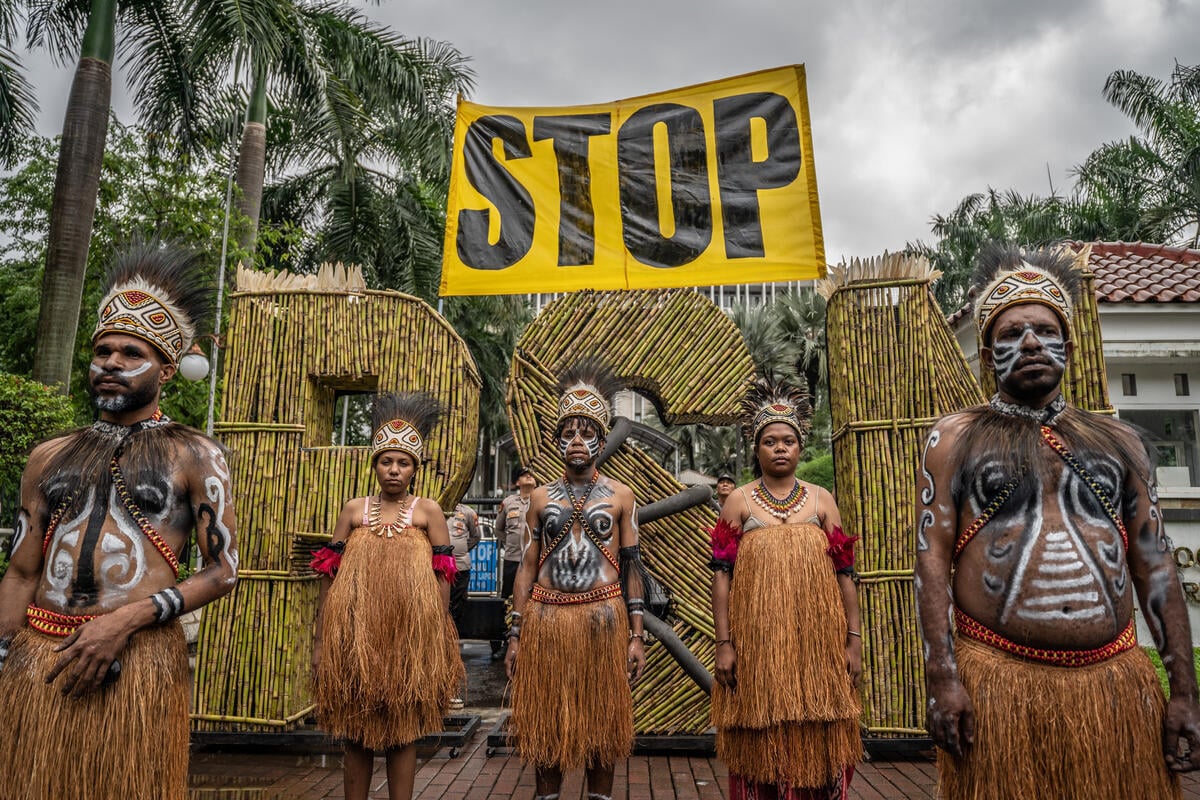Longorot Epuu’s 8-year-old niece, his namesake, was sick.
Epuu quickly recognized the signs of kala-azar, the “black fever,” while visiting his brother’s family in a neighboring village in Kenya’s vast, arid Turkana region in September of last year. The younger Longorot had a high fever and a swollen stomach, and she was very weak. Also known as visceral leishmaniasis, kala-azar is caused by female sandfly bites and predominantly impacts children under the age of 15. But Epuu didn’t know that when left untreated, the disease attacks vital organs and is fatal in 95 percent of cases.
Secure · Tax deductible · Takes 45 Seconds
Still, he could tell something was very wrong. He picked up his niece and drove her on his motorbike to the local hospital 6 miles away. On the sixth day of her stay, she died.
“We were shocked and completely shaken,” Epuu said. “It was just too late.”
Georgia Gee
Currently, East Africa accounts for over 70 percent of the world’s estimated 50,000 to 90,000 annual kala-azar cases — and in Kenya, the disease is becoming endemic in more and more areas, in part due to climate change. Rising temperatures and erratic rainfall, including dramatic swings between severe droughts and flash floods, have supercharged the breeding of infected sandflies and the spread of kala-azar in the region.
Five million people are at risk of kala-azar in Kenya, which has set a goal of eliminating the disease by 2030. Academics, doctors, and field-workers said that target is overly ambitious, in part because U.S. President Donald Trump unilaterally cut most international aid to countries like Kenya and shuttered the United States Agency for International Development, or USAID, which funded many of the community health workers who manage kala-azar cases and raise awareness on the ground. Between extreme weather and the funding cuts, Turkana is losing many of the resources it needs to address kala-azar right as it’s becoming more common.
“The cuts are really tragic,” said James Ekamais, the coordinator for kala-azar and other so-called neglected tropical diseases for Turkana County. “Early detection and the management of patients is now compromised. We will lose them. We anticipate the death rate going up.”

Georgia Gee
Kala-azar was first documented in Kenya in the early 19th century when an outbreak occurred around Lake Turkana, the largest desert lake in the world. Since then, the yearslong gaps between outbreaks in Turkana, and throughout Kenya, have shortened.
Since late last year, there has been a significant surge in cases in northeastern Kenya. Turkana, an area of about 1 million people, is a national hotspot and has seen about 200 to 300 cases annually over the past five years. In September, the county government officially declared a kala-azar emergency as 2025 registers the highest annual caseload on record, with over 520 cases reported so far. Turkana has become one of Kenya’s first counties to formally escalate the disease to crisis level as it fears a full-scale outbreak. Meanwhile, Kenya’s Ministry of Health and community health workers in Turkana say that both case numbers and fatalities are severely underreported.
For sandflies, the dry, degraded land surrounding Lake Turkana provides an ideal environment. They breed in warm temperatures and dark spaces, particularly the cracked soil and ant hills that surround manyattas, communities of traditional homes built with mud and grass. The traditional nomadic livelihoods in the region only exacerbate this challenge, as they increase the exposure faced by herders who are constantly moving their cattle in search of water and food. Sandflies can also easily enter the temporary dwellings and huts relied on by this population.

Georgia Gee
The temperature in the area can reach 110 degrees Fahrenheit. From 1967 to 2012, minimum and maximum air temperatures in Turkana increased by 2 to 3 degrees Celsius (3.6 to 5.4 degrees F) — significantly more than the global average. According to a climate report Turkana County published in 2023, Kenya’s mean surface temperature is projected to increase in the range of 1 to 1.5 degrees C (1.8 to 2.7 degrees F) by 2030. Rainfall is also becoming more erratic, leading to extreme droughts that further degrade the land.
“Just a small climatic change can make a big difference,” said Kris Murray, a professor of environmental change and health at the London School of Hygiene and Tropical Medicine. “It can speed up the life cycle of the vector” — in this case, the sandfly — “leading to an increase in abundance and the biting rate in that area.”

Georgia Gee
Insect repellent and bed nets help prevent the disease, but these are not readily available in poverty-stricken areas. Kala-azar is often treated with 17 to 30 days of daily injections that include antimony-based drugs, which are known to be toxic and have strong side effects. While an oral drug is currently in clinical trials in Ethiopia, it is unclear when it will become available.
Many kala-azar patients have co-morbidities. In the remote town of Kaikor, where Epuu’s niece died, most also suffer from hepatitis B, a serious liver infection. Another common co-infection is HIV/AIDS, which weakens the immune system and makes people more vulnerable to developing kala-azar after sandfly bites.
Far-flung areas like Turkana have long depended on community health workers to spread awareness about both kala-azar and HIV/AIDS, as well as manage and report case numbers. Many of these workers were supported by USAID and have seen their funding disappear since Trump slashed the agency’s budget. Global USAID funding for neglected tropical diseases — a category that includes kala-azar as well as more common infections like dengue — totaled $115 million in 2024. Now, all of the funding for neglected tropical diseases for 2025 has been completely frozen, and HIV/AIDS funding has been cut by 70 percent.
A spokesperson for the U.S. State Department told Grist that the “programs have been determined to not fit within the standards laid out by Secretary [Marco] Rubio for U.S. foreign assistance, which must make the United States stronger, safer, or more prosperous.” They did not respond to questions about which kala-azar programs had been cut and how much money the programs cost.
USAID flyers remain plastered across dilapidated hospitals in Turkana, from the fridges storing drugs to the facades of the buildings. Meanwhile, Turkana, alongside nearly a dozen counties in Kenya experiencing kala-azar outbreaks, is suffering from a critical shortage of medications and rapid diagnostic test kits.

Georgia Gee
Ekamais, the Turkana County neglected tropical disease coordinator, said in mid-May that he had received only five test kits from the national government so far that month. Without kits, doctors attempt to diagnose by physically assessing symptoms, which can be unreliable given their similarities to malaria. The local hospital had already reported 68 cases in May and was experiencing an increasing number of sick refugees arriving from the borders of South Sudan, Ethiopia, and Uganda.
Community health workers across Turkana also said they were struggling with shortages of tests and medication in the face of rising case numbers.
They also claim that funding from the national Kenyan government has been decreasing, despite its goal to eliminate the disease. The Kenya Medical Research Institute, a government corporation that monitors kala-azar, did not respond to a request for comment.
“The funding right now is negligible,” said James Ekiru Kidalio, director of medical services for Turkana County. “Kala-azar is deadly and needs to be handled with the seriousness it deserves.”
Unfortunately, major drug corporations have shown little interest in the disease. “Kala-azar is a major health problem, but the issue is that it generally affects poor people in rural areas,” said James McKerrow, director of the Center for Discovery and Innovation in Parasitic Diseases at the University of California San Diego. “As a result, the development of drugs or just studying the disease is not something that international pharmaceutical companies want to do, because they’re not going to make any money on it.”
For now, there are some minor success stories. In mid-May, Eketan Amurei — who did not know her age but appeared to be in her early 20s — finished her 30-day treatment plan in Loima, a subcounty of Turkana.

The journey to recovery had been extremely difficult. Amurei experienced severe abdominal pain for a month and tried local and herbal treatments to cure it, including cutting her spleen with a razor blade to release “bad blood” — a common practice among Turkana residents with kala-azar symptoms.
When this did not relieve her sickness or swelling, Amurei began walking to the local hospital. The walk was more than 15 miles and took her five days due to her weakness. She slept on the ground outside along the way.
Now, finally fully recovered, Amurei said she would walk home and go back to selling firewood to provide for her five children. “I’ve been wondering how my family has stayed afloat,” she said. “And I’m scared, will I get it again?”
Source link
Georgia Gee grist.org




